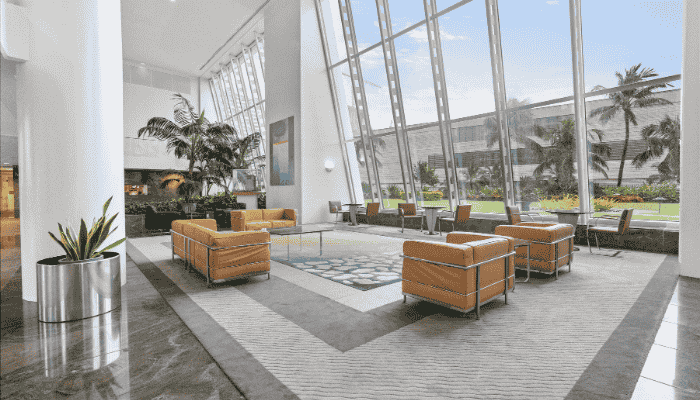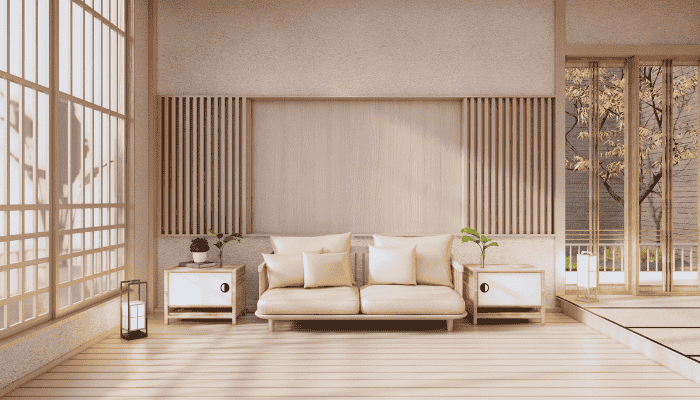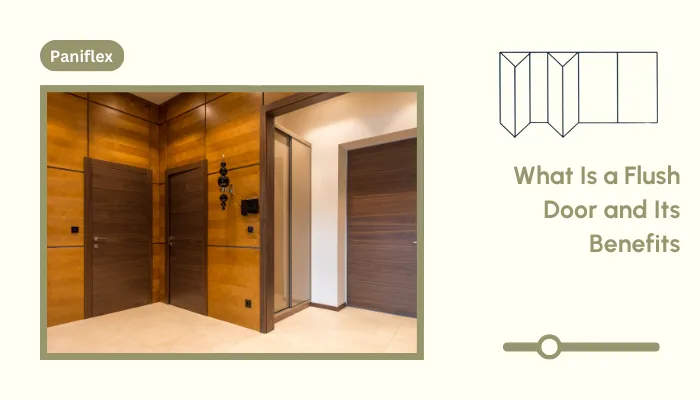Have you ever walked into a building and felt an instant emotional connection? As an architect, you hold the power to shape the physical space and the emotional landscape of those who inhabit it.
Emotional architecture is the practice of designing buildings and spaces that evoke specific emotional responses and create meaningful experiences for users.
It goes beyond mere functionality; it taps into the deepest parts of the human psyche, evoking feelings of awe, comfort, and inspiration.
Buildings and spaces profoundly influence our emotions, experiences, and even our physical and psychological well-being. In this article, we’ll explore the fascinating world of emotional architecture and provide you with valuable insights to elevate your designs.
Get ready to unlock the emotional power of architecture and create spaces that leave a lasting impact on the lives of your clients.
The Psychological Impact of the Built Environment
Emotional architecture recognizes the profound influence that buildings and spaces have on our physical and psychological well-being.
The design of a space can evoke a wide range of emotions, from tranquility and comfort to excitement and awe. As an architect, it’s crucial to understand the connection between human emotions and architectural design.
So, now that we’ve seen how spaces affect us individually let’s examine their broader impact on society.
Architecture as a Reflection of Societal Values
Beyond its impact on individuals, emotional architecture plays a significant role in shaping societal values and beliefs.
The buildings architects create are a tangible expression of our culture, aspirations, and priorities. By designing spaces that resonate emotionally, architects can contribute to the larger narrative of our communities and leave a lasting legacy.
We’ve discussed the big picture; let’s focus on what makes these spaces emotionally engaging.
Ready to experience the benefits of custom closet doors? Explore our range of Paniflex products now.
Key Elements of Emotional Architecture
Architects must consider a range of design elements to create emotionally impactful spaces. Let’s explore some of the critical components that contribute to emotional architecture.
Scale, Proportion, Form, and Shape
The scale and proportion of a space can significantly influence how people feel within it. Expansive, grand spaces can evoke a sense of awe and inspiration, while intimate, cozy spaces foster a feeling of comfort and security.
The form and shape of architectural elements, such as curves or sharp angles, can also elicit specific emotional responses.
Materials, Textures, and Color Psychology
The choice of materials, textures, and colors plays a crucial role in emotional architecture. Each material has its unique character and can evoke different emotions.
Rough, natural textures may create a sense of warmth and authenticity, while smooth, polished surfaces can convey elegance and sophistication. Color psychology is another powerful tool in the architect’s arsenal, with different hues evoking specific moods and emotions.
Light, Shadow, and Texture Interaction
The interplay of light and shadow can dramatically impact the emotional atmosphere of a space. Natural light can uplift and energize, while carefully placed artificial lighting can create a sense of intimacy or drama. How light interacts with textures and materials can also enhance the emotional depth of a space.
Biophilic Design Principles

Incorporating elements of nature into architectural design has been shown to impact human well-being profoundly. Biophilic design principles, such as integrating plants, natural materials, and views of nature, can reduce stress, improve cognitive function, and create a sense of connection to the natural world.
Cultural and Personal Elements in Design
Emotional architecture also considers the cultural and personal elements that resonate with users. Incorporating cultural motifs, local materials, and personalized touches can create a sense of belonging and emotional connection to a space.
By understanding the cultural context and individual preferences of the intended users, architects can design spaces that feel authentic and meaningful.
Want to know how to build your own custom designs?
Equipped with these details, let’s bring it all together to craft emotionally impactful spaces.
Evoking Emotions through Architecture
Now that we’ve explored the key elements of emotional architecture let’s explore strategies for designing spaces that evoke specific emotional responses.
Creating Spaces that Connect Emotionally

To create emotionally resonant spaces, architects must consider the user’s journey. How do people enter and move through the building? What emotions do you want them to feel at different points? Architects can guide users on an emotional journey by carefully orchestrating the sequence of spaces and experiences.
Techniques to Stimulate Emotional Responses
Architects can employ various techniques to stimulate emotional responses. For example, contrasting scales, such as a grand entrance leading to a more intimate space, can create a sense of surprise and delight. Incorporating unexpected elements or playful details can evoke curiosity and engagement. Using light, color, and materials strategically can create specific emotional atmospheres.
Examples can paint a clearer picture, so let’s look at some inspiring case studies next.
Case Studies and Examples
To illustrate the power of emotional architecture, let’s look at some case studies and examples of emotionally impactful spaces:
- The Therme Vals in Switzerland, designed by Peter Zumthor, is a prime example of how architecture can evoke a sense of tranquility and relaxation. Natural materials such as stone and water and carefully controlled lighting create a serene and meditative atmosphere.
- The Jewish Museum in Berlin, designed by Daniel Libeskind, is a powerful example of how architecture can evoke emotions of grief, loss, and remembrance. The architect’s use of jagged, fragmented forms, intentional voids, and empty spaces creates a visceral emotional experience for visitors.
- The Guggenheim Museum in Bilbao, Spain, designed by Frank Gehry, is a stunning example of how architecture can evoke a sense of awe and wonder. Frank Gehry designed fluid, sculptural forms and integrated the interplay of light and shadow to create a dynamic and captivating visitor experience.
Armed with inspiration from these examples, let’s talk tactics.
Designing Emotional Architectural Experiences
To create emotionally impactful spaces, architects must consider various design strategies and elements:
Influence of Light on Mood and Space Perception
Light plays a crucial role in shaping a space’s emotional atmosphere. Natural light can create a sense of warmth, openness, and connection to the outside world. Architects can use skylights, large windows, and light wells to bring natural light into a space.
On the other hand, artificial lighting can create specific moods and highlight architectural features. Soft, diffused lighting can create a sense of intimacy and comfort, while dramatic, focused lighting can evoke a sense of drama and intensity.
Ready to experience the benefits of custom closet doors? Explore our range of Paniflex products now.
Using Colors and Textures to Evoke Specific Emotional Responses
Colors and textures are potent tools for evoking specific emotional responses in architecture. Warm colors, such as reds, oranges, and yellows, can create a sense of energy, excitement, and intimacy. Excellent colors, such as blues and greens, can evoke a sense of calm, tranquility, and relaxation.
Textures also play a role in shaping emotional responses. Smooth, polished surfaces can convey a sense of elegance and sophistication, while rough, natural textures can create a sense of warmth and authenticity.
Integrating Nature and Indoor Elements for Positive Emotions
Integrating nature and indoor elements into architectural design can positively impact emotional well-being.
Biophilic design principles, such as incorporating plants, natural materials, and views of nature, can reduce stress, improve cognitive function, and create a sense of connection to the natural world.
Indoor water features, such as fountains or water walls, can also develop an understanding of tranquility and relaxation.
Personalization and Inclusion of Cultural Elements
Personalization and including cultural elements can create a solid emotional connection between users and a space.
Incorporating artwork, photographs, or personal mementos can make a space more meaningful and intimate. Similarly, incorporating cultural motifs, patterns, or materials can create a sense of belonging and connection to a larger cultural narrative.

The Role of Architecture in Health and Well-being
Emotional architecture plays a significant role in promoting health and well-being. Architects can contribute to the overall well-being of individuals and communities by designing spaces that foster positive emotions and reduce stress.
Therapeutic and Biophilic Architecture
Therapeutic architecture focuses on creating spaces that promote healing and well-being, such as healthcare facilities and wellness centers. By incorporating biophilic elements, such as gardens, natural light, and views of nature, architects can create environments that support physical and emotional recovery.
Impact of Design on Indoor Air Quality and Building Microbiomes
The design of a building can significantly impact indoor air quality and the building’s microbiome. Poor ventilation, moisture buildup, and the use of toxic materials can lead to the growth of harmful microorganisms and negatively impact the health of occupants. On the other hand, careful design considerations, such as proper ventilation, moisture control, and non-toxic materials, can promote a healthy indoor environment and support the well-being of users.
Architecture’s Role in the Pandemic Era
In the wake of the COVID-19 pandemic, the role of architecture in promoting health and well-being has become even more crucial. Architects are now tasked with designing spaces prioritizing safety, social distancing, and mental health considerations.
Emotional architecture can play a vital role in creating environments that foster community and connection, even in physical separation.
With the pandemic reshaping our world, what’s next for emotional architecture?
Future Trends in Emotional Architecture
As society evolves, so too does the field of emotional architecture. Let’s explore some of the future trends that are shaping the way we design emotionally resonant spaces.
Sustainability and Emotional Connection
Sustainability is becoming an increasingly important consideration in architectural design. By incorporating sustainable materials, energy-efficient systems, and green spaces, architects can create buildings that minimize environmental impact and foster a sense of connection to the natural world.
Technological Integrations for Enhanced Emotional Experiences
Advances in technology are opening up new possibilities for emotional architecture. Interactive installations, responsive lighting systems, and immersive digital experiences can all be used to enhance the emotional impact of a space. As architects, staying up-to-date with emerging technologies and considering how they can be integrated into your designs is essential.
Ready to experience the benefits of custom closet doors? Explore our range of Paniflex products now.
Adapting to Evolving Cultural and Societal Values
As cultural and societal values evolve, emotional architecture must adapt to remain relevant and meaningful. Architects must be attuned to the changing needs and preferences of users and design spaces that reflect the values and aspirations of the communities they serve.
This may involve incorporating inclusive design principles, addressing social equity issues, and creating spaces that promote a sense of belonging and connection.
Concluding Thoughts
Emotional architecture is a powerful tool for shaping human experiences and societal values. By understanding the psychological impact of the built environment and employing key design elements, architects can create spaces that resonate deeply with those who inhabit them.
From evoking specific emotional responses to promoting health and well-being, the potential of emotional architecture is vast and ever-evolving.
Throughout this article, we’ve explored the various aspects of emotional architecture, including the psychological impact of the built environment, key design elements, strategies for evoking emotions, and the role of architecture in health and well-being. We’ve also looked at future trends in emotional architecture, such as sustainability, technological integrations, and adapting to evolving cultural and societal values.
As an architect, embracing the principles of emotional architecture can elevate your designs and leave a lasting impact on the lives of your clients. By creating spaces that inspire, comfort, and transform, you can shape the physical environment and the emotional landscape of those who inhabit it.
So go forth, unlock the emotional power of architecture, and create spaces that resonate with the hearts and minds of those who experience them. Remember, the buildings and spaces we make are not just static structures; they are living, breathing entities that can shape our emotions, experiences, and lives.






